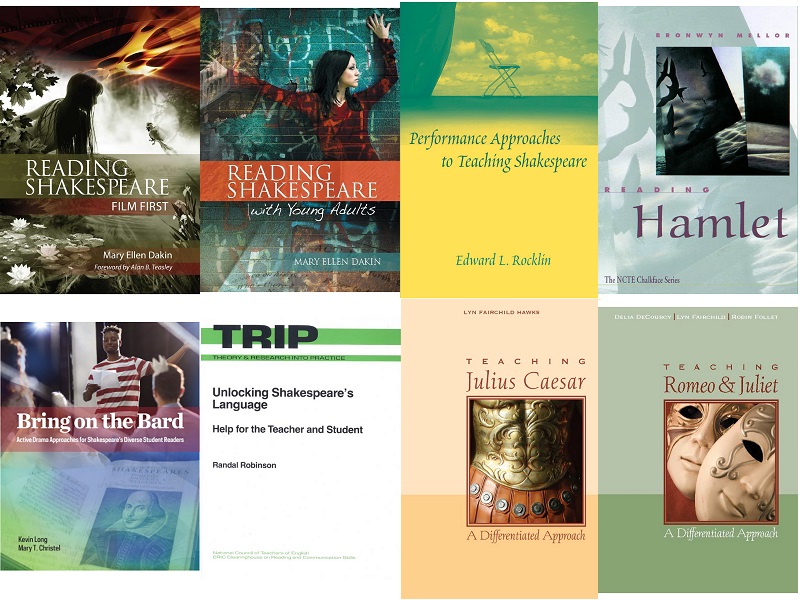On April 23 in 1564, William Shakespeare was born. It’s been said that Shakespeare’s complete works consist of 884,647 words and 118,406 lines. Let’s look at some of the NCTE texts written about the works of Shakespeare.
In Reading Shakespeare Film First, Mary Ellen Dakin asserts that we need to read Shakespeare in triplicate—as the stuff of transformative literature, theater, and film. See also the author’s companion website, where she extends and updates the ideas and materials in this book.
Reading Shakespeare with Young Adults explores different methods for getting students engaged—and excited—about Shakespeare’s plays as they learn to construct meaning from the texts’ sixteenth-century language and connect it to their twenty-first-century lives.
How can high school and college teachers help their students get the most out of studying Shakespeare? In Performance Approaches to Teaching Shakespeare, Edward L. Rocklin offers teachers a wide array of concepts and practices to explore specific performances as well as the performance potentials of a Shakespeare text.
Reading Hamlet contains a wealth of ideas and practical activities for studying Shakespeare’s play. The first section provides background material to help prepare your students to read Hamlet. Section Two, “Reading the Play,” features notes on each scene of the play, accompanied by activities and suggestions for further study.
In Bring on the Bard: Active Drama Approaches for Shakespeare’s Diverse Student Readers Kevin Long and Mary T. Christel offer active drama approaches that position students to engage with a rich text through low-risk speaking and improvisation activities as a part of any ELA classroom.
With the activities in Unlocking Shakespeare’s Language: Help for the Teacher and Student, students can come to understand the language of Shakespeare by learning to recognize and translate troublesome words and syntactic patterns.
Teaching Julius Caesar: A Differentiated Approach offers solutions for bringing the play to life for all students – those with various interests, readiness levels, and learning styles. The author offers practical, engaging, and rigorous lessons for teaching reading, writing, speaking, performance, and research that can be used as-is or can be adapted to suit the needs of your students and classroom environment.
In Teaching Romeo and Juliet: A Differentiated Approach the authors offer a differentiated approach to teaching Shakespeare’s Romeo and Juliet, including lesson plans focused on key scenes, close reader handouts geared toward different levels of readiness, and scaffolded reading activities. This differentiated approach helps students develop a deep understanding of Romeo and Juliet through activities such as cinematic interpretation, creative writing, dramatic interpretation, and Socratic discussion.
What will you be doing to celebrate Shakespeare’s birthday?
It is the policy of NCTE in all publications, including the Literacy & NCTE blog, to provide a forum for the open discussion of ideas concerning the content and the teaching of English and the language arts. Publicity accorded to any particular point of view does not imply endorsement by the Executive Committee, the Board of Directors, the staff, or the membership at large, except in announcements of policy, where such endorsement is clearly specified.

